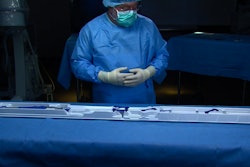A new microchip can capture rare clusters of circulating tumor cells, which produce new insights into how cancer spreads.
The Cluster-Chip, funded by the National Institute of Biomedical Imaging and Bioengineering, part of the National Institutes of Health, can efficiently capture circulating tumor cells clusters from whole, unprocessed blood.
CTCs are cells that break away from a tumor and move through a cancer patient’s bloodstream. Single CTCs are extremely rare, typically fewer than 1 in 1 billion cells. These cells can live in distant organs, and researchers believe this is one mode by which cancer spreads.
“Very little is known about CTC clusters and their role in the progression and metastasis of cancer," said NIBIB Director Roderic I. Pettigrew, Ph.D., M.D. "This unique technology presents an exciting opportunity to capture these exceptionally rare groups of cells for further analysis in a way that is minimally-invasive. This is the kind of breakthrough technology that could have a very large impact on cancer research.”






















